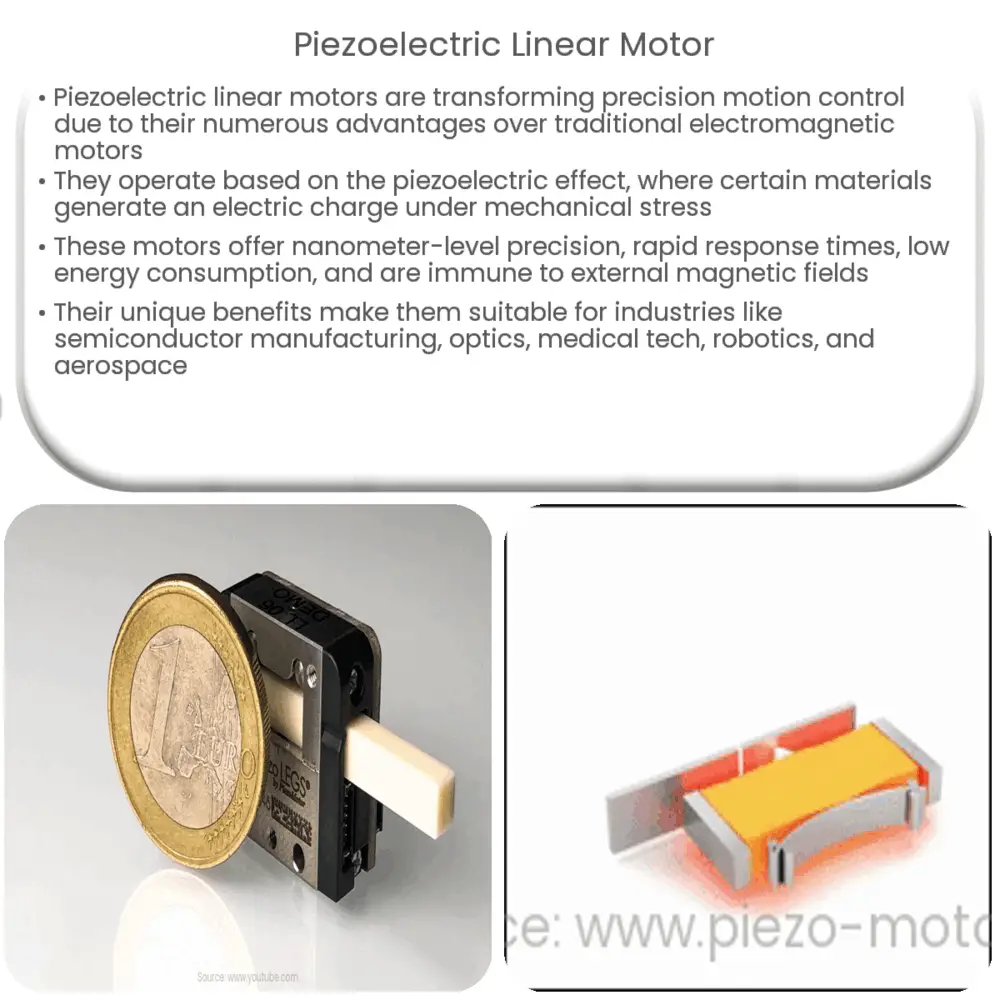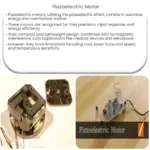Piezoelectric linear motors offer precise motion control, high speed, low energy consumption, and non-magnetic operation for various industries.

Piezoelectric Linear Motors: A Revolutionary Technology for Precision Motion Control
The advent of piezoelectric linear motors has revolutionized the world of precision motion control, offering a myriad of advantages over traditional electromagnetic motors. In this article, we will delve into the fundamental principles of piezoelectric linear motors, explore their advantages, and discuss potential applications in various industries.
Understanding Piezoelectricity
Piezoelectricity is a phenomenon where certain materials generate an electric charge when subjected to mechanical stress. This effect is reversible, meaning that when an electric field is applied to a piezoelectric material, it experiences a change in shape. Piezoelectric materials include crystals like quartz and Rochelle salt, as well as certain ceramics like lead zirconate titanate (PZT).
Working Principle of Piezoelectric Linear Motors
Piezoelectric linear motors make use of the piezoelectric effect to achieve linear motion. They consist of a piezoelectric actuator and a moving element, often referred to as the slider or runner. When an electric field is applied to the piezoelectric actuator, it expands or contracts, causing the moving element to be pushed or pulled in a linear direction. By rapidly switching the direction of the electric field, the motor can achieve continuous linear motion.
There are several types of piezoelectric linear motors, including standing wave motors, traveling wave motors, and inchworm motors. Each type has a unique operating mechanism, but all rely on the piezoelectric effect to generate motion.
Advantages of Piezoelectric Linear Motors
Piezoelectric linear motors offer several benefits over traditional electromagnetic motors, making them ideal for applications requiring high precision, fast response, and low energy consumption. Some of the key advantages include:
- High Precision: Piezoelectric linear motors are capable of achieving nanometer-level precision, making them ideal for applications that demand extreme accuracy, such as semiconductor manufacturing and metrology.
- Fast Response: The rapid expansion and contraction of piezoelectric materials allow these motors to achieve high speeds and accelerations, enabling quick response times in dynamic systems.
- Low Energy Consumption: Due to their direct-drive nature, piezoelectric linear motors have minimal energy losses, resulting in lower overall energy consumption compared to traditional electromagnetic motors.
- Non-Magnetic: As piezoelectric motors do not rely on magnetic fields for operation, they are immune to interference from external magnetic fields, making them suitable for use in sensitive environments, such as MRI machines or in space applications.
Applications of Piezoelectric Linear Motors
With their unique advantages, piezoelectric linear motors have found applications across various industries. In the next section, we will explore some of these applications in greater detail.
Semiconductor Manufacturing
Piezoelectric linear motors are widely used in the semiconductor industry, where extreme precision and high-speed motion are critical for processes like photolithography and wafer inspection. The motors’ nanometer-level accuracy and rapid response times enable manufacturers to create smaller, more complex components with greater efficiency.
Optics and Photonics
In the field of optics and photonics, piezoelectric linear motors play a crucial role in adjusting the position of lenses, mirrors, and other optical components with high precision. Applications include laser beam steering, adaptive optics, and optical microscopy, where accurate positioning is essential for achieving optimal image quality.
Medical and Biotechnology
Medical devices and biotechnology equipment often require precise motion control for tasks like sample positioning, drug delivery, and surgical procedures. Piezoelectric linear motors’ non-magnetic nature and high precision make them well-suited for use in sensitive environments such as MRI machines and in the development of nanoscale drug delivery systems.
Robotics and Automation
The high precision and rapid response times of piezoelectric linear motors make them a valuable asset in robotics and automation systems. They are used in applications like precision assembly, pick-and-place operations, and nanopositioning, where accuracy and speed are paramount for efficient performance.
Aerospace and Defense
In aerospace and defense applications, piezoelectric linear motors provide precise motion control for satellite positioning, guidance systems, and vibration damping. Their immunity to external magnetic fields and low energy consumption make them ideal for space applications where reliability and efficiency are critical.
Conclusion
Piezoelectric linear motors have emerged as a revolutionary technology in the field of precision motion control, offering numerous advantages over traditional electromagnetic motors. Their high precision, fast response, low energy consumption, and non-magnetic nature make them an attractive choice for a wide range of applications in industries such as semiconductor manufacturing, optics and photonics, medical and biotechnology, robotics and automation, and aerospace and defense. As technology continues to advance, we can expect to see even more innovative applications and improvements in the performance of piezoelectric linear motors.



